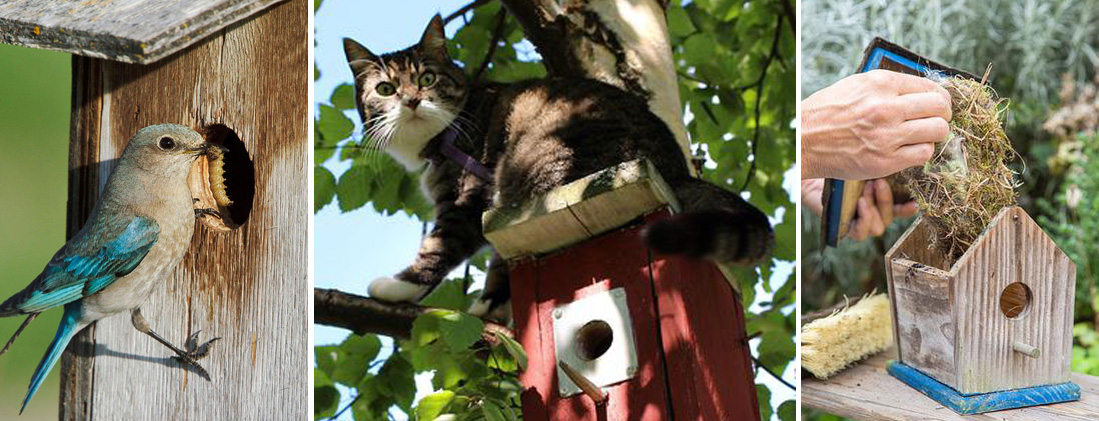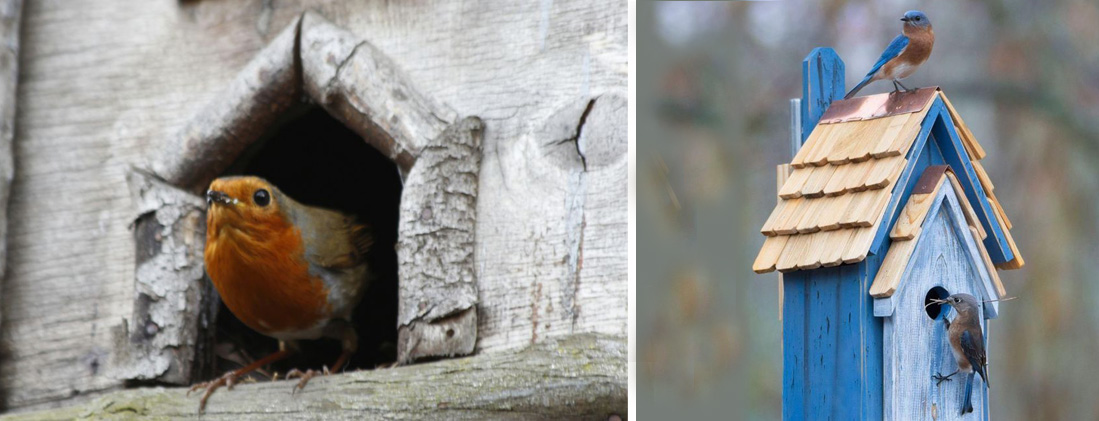Birdhouses are a common addition to backyards and a great way to enjoy the beauty of nature. But often, little thought is given to how best to design the houses to protect birds from nature’s and manmade dangers. Here are a variety of ways to keep your visitors from harm.
1. Protect Them from Predators: Remove perches from the house. Your birds don’t need them, but they make convenient footholds for predators like stray cats, squirrels, raccoons, and more. Clean up random branches that can make for a footpath directly into the house. Supervise your outdoor pets, such as cats, during nesting season to protect young birds just learning to fly. Leave between 5 to 8 feet of distance between the birdhouse and brush to prevent an ambush by a predator. At the same time, make sure the house is positioned close enough to plants to enable birds to scout the area around their new home.
2. Ensure the Birdhouse Opening is the Right Size: Match up the birdhouse to the type of species you wish to attract. An opening too large provides easy, unwanted access for predators and also could cause smaller baby birds to tumble out of the hole. If the hole is too small, birds can either get stuck or not use the house at all.
3. Choose Natural Colors: Browns and dark shades of green will blend into the surroundings and will do the best job at attracting birds.
4. Weatherproof the House: While you want to create a snug environment, you’ll need to protect your birds from extreme heat, damaging winds, or rainy leaks. Choose a design that contains ventilation holes to circulate fresh air and provide natural air conditioning. If the house does not come with holes, drill them in the corners or on the sides versus the roof which could cause leaks.
5. Position the House Properly: Make sure the opening does not face direct sunlight and position the house so that it receives full or partial shade. Angle it to prevent rain from coming into the opening or ventilation holes. Place it underneath your roof’s eaves or against the trunk of a large tree for maximum protection.
6. Avoid Metal: Metal houses are hot, hot, hot and are also highly visible to predators because of the reflective light they produce.
7. Limit Paint to the Outside of the House: Do not paint interior surfaces or the entrance hole’s inner rim. If you do choose to paint the house’s exterior use environmentally safe paints, stains, or varnishes. Avoid lead-based paint because this can be toxic to animals.
8. Keep the House Clean: Remove all nesting or debris and rinse the house with a solution of one part bleach and nine parts water seasonally or when your birds vacate their home. Allow it to dry before repositioning it for your next guests.
A well-positioned and safe birdhouse won’t guarantee tenants but certainly increases the odds. By giving birds a safe environment, you will provide them with the perfect home for their growing family while you enjoy their beauty and grace.



